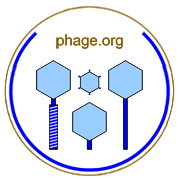

Description of regions of Bacteria and Archaea genomes that encode the specificity of an anti-foreign DNA adaptive immunity.
Short for Clustered Regularly Interspaced Short Palindromic Repeats, CRISPR is now known to be an adaptive mechanism of bacterial resistance to phages and other forms of bacteria-foreign DNA.
The spacer sequences of CRISPR loci, found between the short palindromic repeats, provides the anti-phage (or anti-plasmid) specificity, matching what are known as proto-spacer sequences on target foreign DNA.
CRISPR functioning requires two distinct steps. First is spacer sequence acquisition which is described as adaptation. Second is the use of spacer sequences to interfere with, for example, phage infection.
A great number of CRISPR publications and reviews exist. For more on CRISPR as an analogy of adaptive immunity as seen in vertebrates, however, see Abedon (2011) and Abedon (2012).
For more on this topic, see Wikipedia, Google, and PubMed. Contact web master. Return to terms.